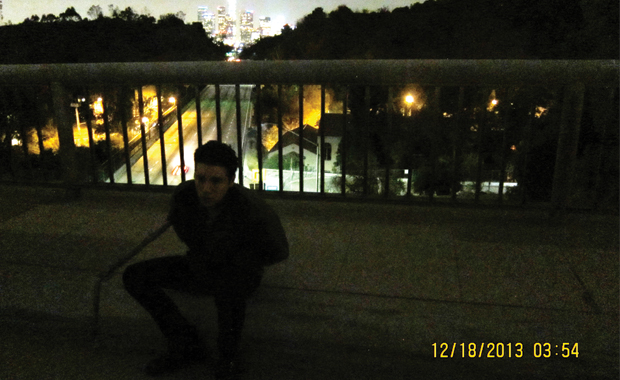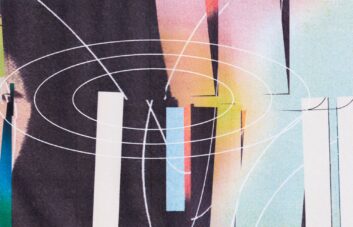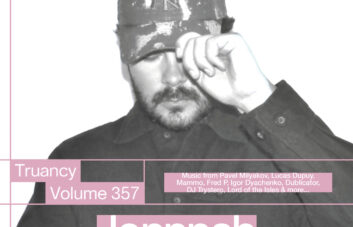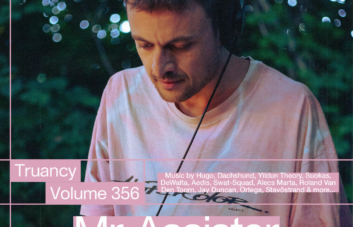If you ever find yourself cruising through LA’s Chinatown with an itchy hand on the radio dial you may just land on pirate station KCHUNG. Like all broadcasters that skirt the guidelines, they operate from an undisclosed studio somewhere in the neighborhood. Thankfully if you’re not within their transmitter radius you can tune in online at anytime from anywhere. While you’re locked in there’s a solid chance that you’ll come across Mutual Slump, the show helmed by producer Afterhours. It’s his second outing for the station after “Field Recordings of the Afterhours” which he co-hosted. Like it’s predecessor Mutual Slump is a hazy affair, decompression vibes to ease the transition from weekend to weekday. The records he plays are a cross section of drone, musique concrete, trip hop, spoken word, dissonant jazz and other tunes of a low or no BPM persuasion.
Stream: Afterhours – Defragment #2 (Not Not Fun)
Slices from many of those styles appear on Lowlife, his latest record for Not Not Fun. Much of the EP is rooted in the sample heavy downtempo grooves of the 1990s but Afterhours melds them seamlessly with the other, more experimental, sounds that appear in his sets. Since a mix is worth at least a thousand words, he sent one over that should give you an idea of what you’re in for if you tune into his show or pick up one of his records. He was also chill enough to chat with us a bit about KCHUNG, digging in the dollar bin, and copping field recordings from unexpected sources.
We’ve been cruising around to your mix a lot this week, what do you think is the ideal time and place to listen to it? “While being mugged somewhere between sunday night and monday morning.”
You’ve done show on pirate radio station KCHUNG for quite a while right? What can someone expect if they tune into “Field Recordings of the Afterhours”? “They can expect to hear silence, ’cause that show is sort of defunct now. But I’ve been involved with KCHUNG more or less from the beginning, about two and a half years. “Field Recordings of the Afterhours” was an ongoing project between me and my friend and collaborator Maxfield Hegedus. Musically, it focused mostly on trip-hop and downtempo electronic, particularly cuts from the fifty-cent bin, things we considered to be lost classics in some minor way. From the start, though, we were interested in abstracting the structure of our sets, always improvising our mixes and pushing the element of sound collage with endless stacks of Environments records, spoken word, lectures and so on.”
Your records combine elements from many different genres so deftly. Has the similarly wide scope of your radio show inspired your production? or vis versa? “Ah yeah, absolutely. The radio show has profoundly informed and augmented my musical practice over the last two years, particularly with this record. There are a fairly limited number of trip-hop records; it’s a genre that existed in its classic form for what, like four or five years? 1994 to 1998? And so, as that well began to run dry, we were incorporating more jazz, more deep house, more generalized downtempo. Not that those genres are wildly different from each other, but the emphasis shifted to sustaining that mood of nocturnal melancholy, regardless of the style.”
Likewise, we may just be projecting, but your work has a very “LA” feel to it. Has the city influenced you in any way? “If it’s influenced me, it’s been in actively keeping any sort of LA aesthetic out of my work. That’s probably where the rain sounds come from. The parts of Los Angeles I like the best are the ones that resemble other cities: parts of downtown, Chinatown, whatever. This is a very nice place to live, but I don’t like looking at it.”
“Lowlife” sounds like it’s peppered with field recordings. Do you often carry a recorder with you? What are the sounds that you gravitate toward most? “I record things on my phone sometimes, that’s about it. Snippets of conversation or just some fluke of pleasant ambient sound. None of the field recordings on the album are originally sourced, though. It’s all youtube or sound effects records. I don’t know of a better source than youtube for that kind of audio, almost everything is there.”
I can’t believe we’re asking this question, but somebody’s got to take a crack at it! When did you first sit down and start producing? Do you have a specific way of approaching a track? “I started working on proto-Afterhours material sometime in 2011, I guess. Playing around with samples as my interest in the guitar waned, a way to make music with less of my own trace on it. After going on a few 100% Silk tours with LA Vampires and living with that style of music night after night for long stretches of time, my inclinations just kind of naturally moved in that direction. I don’t think I have a specific way of approaching a track, or at least I try not to. It usually just begins with a sample, something I hear on the radio while driving or at home digging through garbage, then the rest of it falls into place somewhat arbitrarily.”
And finally, this is something we ask all the Californians we chat with. If some Truants found themselves in LA where could we snag the best taco? “I don’t know, the best places are probably the ones with the longest lines. Which I notice as I drive past them, on my way to eat somewhere else.”
Afterhours – Lowlife Mix by TRUANTS
Tracklist:
Susumu Yokota – Tankui
9lazy9 – Big Six
Rypdal, Vitous, Dejohnette – Will
Franklin de Costa – Souldbound
Anenon – Shibaura
DJ Cam – Mad Blunted Jazz
El Mahdy Jr – From Hate To Smoke
Biosphere – Iberia Eterea




